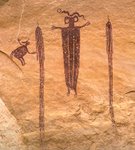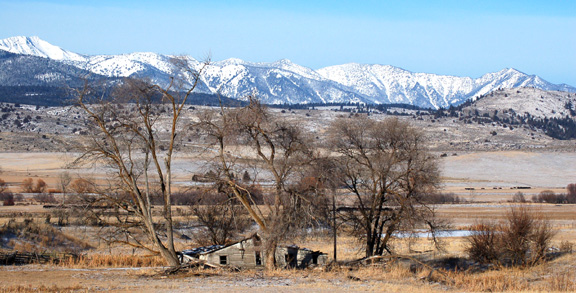Showing posts with label Habitat Degradation. Show all posts
Showing posts with label Habitat Degradation. Show all posts
Monday, October 31, 2011
7 BILLION AND COUNTING
In This Edition:
- 7 BILLION AND COUNTING (Center for Biological Diversity & World Watch Institute)
- Some Consequences of Teen Pregnancies in Western Industrialized Countries
_____
FREQUENTLY ASKED QUESTIONS: 7 BILLION AND COUNTING
Center for Biological Diversity
How many people are there on the planet, and how has the population grown?
The United Nations predicts the world population will reach 7 billion on October 31, 2011, and continue exploding till its hits 10 billion by century’s end. Global population doubled from 1 billion to 2 billion between 1800 and 1930, then exploded over the past five decades — doubling from 3.5 billion in 1968 to nearly 7 billion now.
How many people will there be at the end of the century?
According to a May 2011 U.N. report, the global human population will likely exceed 10 billion by 2100. This projection is higher than previous estimates, which predicted the population would peak at slightly more than 9 billion in 2050 and then begin to decline.
How does this affect plants and animals?
Population growth has an enormous impact on biodiversity, the suite of plant and animal species that make up our physical world. As the world’s human population grows unsustainably, so do its unyielding demands for water, land, trees and fossil fuels — all of which come at a steep price for other life forms already being forced into remote corners, deprived of food sources or outcompeted by introduced species. Most directly, population growth has led to massive habitat loss, overhunting and interruption of migration.
Is it affecting the rate of species extinction?
Most biologists agree we’re in the midst of the Earth’s sixth mass extinction event. Some have even begun to use the term “Anthropocene” to describe a new period of time on Earth. Species are disappearing up to 1,000 times faster than is typical of the planet’s history. This time, though, it isn’t because of geologic or cosmic forces but unsustainable human population growth.
What are some of the North American species that have already gone extinct because of overpopulation?
They include the woodland bison of West Virginia, Arizona’s Merriam’s elk, the Rocky Mountain grasshopper and Puerto Rico’s Culebra parrot. Each year researchers report discovering more than 15,000 new species around the world; at the same time, more than 90 species are going extinct every day.
How can we stop this?
One person at a time. One of the most important actions we can take is to speak out and speak up. For too long, overpopulation has been ignored by environmental groups and others, largely for political reasons. But at this point the facts can’t be ignored, and there are practical, real-world ways to begin addressing the crisis.
Forty percent of pregnancies are unplanned, and the majority of women in the world do not have access to birth control. These realities are often a result of women not being in decision-making positions.
We can reduce our own population to a sustainable level in a number of ways, including the empowerment of women, education of all people, universal access to birth control and a societal commitment to ensuring that all species are given a chance to live and thrive. These steps will decrease human poverty and overcrowding, raise our standard of living and help sustain the lives of plants and animals everywhere — and with them the natural systems on which our own lives and wellbeing depend.
Isn’t this just a problem for the rest of the world?
No. The United States has the world’s third largest population after China and India. At 2.1 children per woman, the U.S. fertility rate remains the highest among developed nations, which average around 1.6. The current U.S. population exceeds 300 million and is projected to grow 50 percent by 2050. By any ecological measure, we have exceeded our carrying capacity.
Isn’t the problem more about overconsumption?
It’s inextricably connected. Dramatic overconsumption has coincided with the population explosion. Consumption of resources — from land and water to oil, gas and minerals — has played a significant role in the loss of biodiversity around the globe. Reducing consumption is vital to curbing the extinction crisis, and so is stemming unsustainable population growth.
What are Endangered Species Condoms?
In 2010, through a network of more than 5,000 volunteers, the Center for Biological Diversity distributed 350,000 free condoms, packaged in boxes with images of endangered species. Distributed in all 50 states — as well as Canada, Puerto Rico and Mexico — they highlighted how runaway human population growth is driving species extinct at a cataclysmic rate. The Center is giving away 100,000 of these popular condoms in 2011 as part of its 7 Billion and Counting campaign.
You can find out more at our website.
What can I do to help with the population crisis?
Talk. The overpopulation crisis has been exacerbated by social reluctance to discuss problems involving reproduction and differing perceptions of the morality of reproduction. No doubt about it: This is a delicate subject. But it’s also essential that people begin to have the conversation.
Host or attend an event about the 7 billion milestone, endangered species and how to stem overpopulation.
Become one of our volunteer condom distributors.
Write a letter to the editorof your local newspaper and talk with, or write to, your elected representatives. Check out ideas to get you started with our Take-action Toolbox.
Become a member of the Center for Biological Diversity, Join our e-network, sign up for Pop X, our monthly e-newsletter about human population and species extinction, join us on Facebook and learn more on our resources page.
Donate to the Center’s overpopulation campaign so we can continue to expand our innovative overpopulation campaign.
__
As Global Population Surpasses 7 Billion, Two Clear Strategies for a Sustainable Future
Greater reproductive choice and measures to reduce resource consumption and waste are critical to reducing humanity's environmental impact
WASHINGTON - October 31 - As the global population surpasses 7 billion people sometime around the end of October, addressing the challenges associated with a still-growing world population will require a two-pronged response, according to experts with the Worldwatch Institute. The combined measures of empowering women to make their own decisions about childbearing and significantly reducing global consumption of energy and natural resources would move humanity toward rather than further away from environmentally sustainable societies that meet human needs.
. . . .
__
Teenage Childbearing and Long-Term Socioeconomic Consequences: A Case Study in Sweden
. . . .
Results: Compared with Swedish women who first gave birth at ages 20-24, those who were teenage mothers had significantly increased odds of each unfavorable socioeconomic outcome in later life, even after the data were adjusted for family socioeconomic situation and maternal birth cohort. For example, teenage motherhood was positively associated with low educational attainment (odds ratios of 1.7-1.9, depending on the specific age during adolescence when the woman gave birth), with single living arrangements (odds ratios, 1.5-2.3), with high parity (odds ratios, 2.6-6.0), with collecting a disability pension (odds ratios, 1.6-1.9) and with welfare dependency (odds ratios, 1.9-2.6). These trends were usually linear, with the highest odds ratios corresponding to women who had had their first child at the youngest age.
Conclusions: A longitudinal analysis of record-linkage data from Sweden supports the view that childbearing during adolescence poses a risk for socioeconomic disadvantage in later life—even for adolescents from relatively comfortable backgrounds and for those who studied beyond elementary school.
Family Planning Perspectives, 2001, 33(2):70-74
. . . .
__
The Children of Teen Parents
Poverty, inadequate social support, mothers’ lack of education, mothers’ cognitive immaturity, and greater maternal stress have all been suggested as possible factors contributing to poor social and educational outcomes for the children of teen mothers.
__
Social Barriers Faced by Adolescent Parents and Their Children
Howard Spivak, MD; Michael Weitzman, MD
From the Department of Pediatrics, Boston University School of Medicine (Drs Spivak and Weitzman), and the Division of Health Services, Boston University School of Public Health (Dr Weitzman).
ABSTRACT
Pregnancy and childbearing are well recognized as having significant, long-term consequences for teenagers. Recent literature documents an array of negative outcomes for children born to adolescents, with a range of factors identified as contributing to the problems observed in these children. These include (1) the characteristics of those teenagers most likely to become parents, (2) the social and economic consequences of early childbearing, (3) the increased biologic vulnerability of children born to teenagers, and (4) the nature of parenting by teenagers. It has been acknowledged that adolescent parents tend to come from high-risk families, have poor academic achievement, and live in our most disadvantaged communities and therefore, biologic, economic, and behavioral factors contribute to the increased likelihood of teenagers having children who are vulnerable to physical and developmental problems. Teenaged parents face many obstacles to economic and social success, and these further influence the environment in which their children grow up. Adolescents also experience many difficulties in adjusting to parenthood and display a range of suboptimal parenting practices. Whereas some of these factors appear highly resistant to change, others have clear clinical, programmatic, and policy implications.
(JAMA 1987;258:1500-1504)
[I have the article in PDF upon request.]
-
- 7 BILLION AND COUNTING (Center for Biological Diversity & World Watch Institute)
- Some Consequences of Teen Pregnancies in Western Industrialized Countries
_____
FREQUENTLY ASKED QUESTIONS: 7 BILLION AND COUNTING
Center for Biological Diversity
How many people are there on the planet, and how has the population grown?
The United Nations predicts the world population will reach 7 billion on October 31, 2011, and continue exploding till its hits 10 billion by century’s end. Global population doubled from 1 billion to 2 billion between 1800 and 1930, then exploded over the past five decades — doubling from 3.5 billion in 1968 to nearly 7 billion now.
How many people will there be at the end of the century?
According to a May 2011 U.N. report, the global human population will likely exceed 10 billion by 2100. This projection is higher than previous estimates, which predicted the population would peak at slightly more than 9 billion in 2050 and then begin to decline.
How does this affect plants and animals?
Population growth has an enormous impact on biodiversity, the suite of plant and animal species that make up our physical world. As the world’s human population grows unsustainably, so do its unyielding demands for water, land, trees and fossil fuels — all of which come at a steep price for other life forms already being forced into remote corners, deprived of food sources or outcompeted by introduced species. Most directly, population growth has led to massive habitat loss, overhunting and interruption of migration.
Is it affecting the rate of species extinction?
Most biologists agree we’re in the midst of the Earth’s sixth mass extinction event. Some have even begun to use the term “Anthropocene” to describe a new period of time on Earth. Species are disappearing up to 1,000 times faster than is typical of the planet’s history. This time, though, it isn’t because of geologic or cosmic forces but unsustainable human population growth.
What are some of the North American species that have already gone extinct because of overpopulation?
They include the woodland bison of West Virginia, Arizona’s Merriam’s elk, the Rocky Mountain grasshopper and Puerto Rico’s Culebra parrot. Each year researchers report discovering more than 15,000 new species around the world; at the same time, more than 90 species are going extinct every day.
How can we stop this?
One person at a time. One of the most important actions we can take is to speak out and speak up. For too long, overpopulation has been ignored by environmental groups and others, largely for political reasons. But at this point the facts can’t be ignored, and there are practical, real-world ways to begin addressing the crisis.
Forty percent of pregnancies are unplanned, and the majority of women in the world do not have access to birth control. These realities are often a result of women not being in decision-making positions.
We can reduce our own population to a sustainable level in a number of ways, including the empowerment of women, education of all people, universal access to birth control and a societal commitment to ensuring that all species are given a chance to live and thrive. These steps will decrease human poverty and overcrowding, raise our standard of living and help sustain the lives of plants and animals everywhere — and with them the natural systems on which our own lives and wellbeing depend.
Isn’t this just a problem for the rest of the world?
No. The United States has the world’s third largest population after China and India. At 2.1 children per woman, the U.S. fertility rate remains the highest among developed nations, which average around 1.6. The current U.S. population exceeds 300 million and is projected to grow 50 percent by 2050. By any ecological measure, we have exceeded our carrying capacity.
Isn’t the problem more about overconsumption?
It’s inextricably connected. Dramatic overconsumption has coincided with the population explosion. Consumption of resources — from land and water to oil, gas and minerals — has played a significant role in the loss of biodiversity around the globe. Reducing consumption is vital to curbing the extinction crisis, and so is stemming unsustainable population growth.
What are Endangered Species Condoms?
In 2010, through a network of more than 5,000 volunteers, the Center for Biological Diversity distributed 350,000 free condoms, packaged in boxes with images of endangered species. Distributed in all 50 states — as well as Canada, Puerto Rico and Mexico — they highlighted how runaway human population growth is driving species extinct at a cataclysmic rate. The Center is giving away 100,000 of these popular condoms in 2011 as part of its 7 Billion and Counting campaign.
You can find out more at our website.
What can I do to help with the population crisis?
Talk. The overpopulation crisis has been exacerbated by social reluctance to discuss problems involving reproduction and differing perceptions of the morality of reproduction. No doubt about it: This is a delicate subject. But it’s also essential that people begin to have the conversation.
Host or attend an event about the 7 billion milestone, endangered species and how to stem overpopulation.
Become one of our volunteer condom distributors.
Write a letter to the editorof your local newspaper and talk with, or write to, your elected representatives. Check out ideas to get you started with our Take-action Toolbox.
Become a member of the Center for Biological Diversity, Join our e-network, sign up for Pop X, our monthly e-newsletter about human population and species extinction, join us on Facebook and learn more on our resources page.
Donate to the Center’s overpopulation campaign so we can continue to expand our innovative overpopulation campaign.
__
As Global Population Surpasses 7 Billion, Two Clear Strategies for a Sustainable Future
Greater reproductive choice and measures to reduce resource consumption and waste are critical to reducing humanity's environmental impact
WASHINGTON - October 31 - As the global population surpasses 7 billion people sometime around the end of October, addressing the challenges associated with a still-growing world population will require a two-pronged response, according to experts with the Worldwatch Institute. The combined measures of empowering women to make their own decisions about childbearing and significantly reducing global consumption of energy and natural resources would move humanity toward rather than further away from environmentally sustainable societies that meet human needs.
. . . .
__
Teenage Childbearing and Long-Term Socioeconomic Consequences: A Case Study in Sweden
. . . .
Results: Compared with Swedish women who first gave birth at ages 20-24, those who were teenage mothers had significantly increased odds of each unfavorable socioeconomic outcome in later life, even after the data were adjusted for family socioeconomic situation and maternal birth cohort. For example, teenage motherhood was positively associated with low educational attainment (odds ratios of 1.7-1.9, depending on the specific age during adolescence when the woman gave birth), with single living arrangements (odds ratios, 1.5-2.3), with high parity (odds ratios, 2.6-6.0), with collecting a disability pension (odds ratios, 1.6-1.9) and with welfare dependency (odds ratios, 1.9-2.6). These trends were usually linear, with the highest odds ratios corresponding to women who had had their first child at the youngest age.
Conclusions: A longitudinal analysis of record-linkage data from Sweden supports the view that childbearing during adolescence poses a risk for socioeconomic disadvantage in later life—even for adolescents from relatively comfortable backgrounds and for those who studied beyond elementary school.
Family Planning Perspectives, 2001, 33(2):70-74
. . . .
__
The Children of Teen Parents
Poverty, inadequate social support, mothers’ lack of education, mothers’ cognitive immaturity, and greater maternal stress have all been suggested as possible factors contributing to poor social and educational outcomes for the children of teen mothers.
__
Social Barriers Faced by Adolescent Parents and Their Children
Howard Spivak, MD; Michael Weitzman, MD
From the Department of Pediatrics, Boston University School of Medicine (Drs Spivak and Weitzman), and the Division of Health Services, Boston University School of Public Health (Dr Weitzman).
ABSTRACT
Pregnancy and childbearing are well recognized as having significant, long-term consequences for teenagers. Recent literature documents an array of negative outcomes for children born to adolescents, with a range of factors identified as contributing to the problems observed in these children. These include (1) the characteristics of those teenagers most likely to become parents, (2) the social and economic consequences of early childbearing, (3) the increased biologic vulnerability of children born to teenagers, and (4) the nature of parenting by teenagers. It has been acknowledged that adolescent parents tend to come from high-risk families, have poor academic achievement, and live in our most disadvantaged communities and therefore, biologic, economic, and behavioral factors contribute to the increased likelihood of teenagers having children who are vulnerable to physical and developmental problems. Teenaged parents face many obstacles to economic and social success, and these further influence the environment in which their children grow up. Adolescents also experience many difficulties in adjusting to parenthood and display a range of suboptimal parenting practices. Whereas some of these factors appear highly resistant to change, others have clear clinical, programmatic, and policy implications.
(JAMA 1987;258:1500-1504)
[I have the article in PDF upon request.]
-
Wednesday, January 27, 2010
A Little Bit Fishy?
Edited for clarity, 1/28/10.
In a recent editorial from the Baker City Herald Editorial Board (A Little Bit Fishy: http://www.bakercityherald.com/Editorials/A-little-bit-fishy), they complain that "the government risks its credibility when it claims a species is in peril yet can’t answer questions about the species that the public should, and probably will, ask."
I strongly disagree, because the government, has is fact answered the public's questions and provided a good deal of explanatory material in the proposed and final rules from 2002 to 2010. They can't, of course, be held responsible for the public's or the Heralds lack of knowledge concerning the principles of conservation biology and "connectivity," or for not answering questions that haven't been asked.
Bull Trout
 Fish & Wildlife Service Photo
Fish & Wildlife Service Photo
The board has printed many editorials that I agree with, especially those that deal with a fiscally conservative approach to spending the people's money (but not their recommendation of a "no" vote on measures 66 & 67), but we come to those conclusions it seems from different perspectives. The main difference to me seems to be that they want to preserve the current system of inappropriate distribution of the country's wealth, including its native flora and fauna, while I would like to change it.
I understand that in a county as "conservative" as Baker County, that a media outlet will tend to sit on the fence or take editorial positions in accordance with the political views of the majority of their readers, which include, among other things, fiscal conservatism, and unfortunately for the biosphere, an animosity toward environmental reforms intended to save the habitats and species that were here before our self-centered and destructive appearance on the historic landscape.
In their editorial, in addition to suggesting that the government "can’t answer questions about the species that the public should, and probably will, ask" they write "of 251 miles of the Powder River and its tributaries proposed as critical habitat, almost one-third — 76 miles —harbor not a single bull trout, according to the FWS." They are of course speaking of habitat that was historically used by bull trout before we altered and nearly destroyed its usefulness to bull trout because of the changes accompanying agricultural development, grazing, mining, logging, and roading activities.
They continue by explaining that "Now we understand that in some cases it’s defensible to protect habitat for a species even when there’s no evidence that species lives there. Terrestrial animals can cover a lot of ground, after all. . . . there are thousands of acres of suitable habitat for lynx on the forest, and it’s reasonable for the forest to try to preserve that habitat because lynx could return. . . . Fish, of course, are considerably more restricted in their movements." These last few statements seem to suggest that the Herald thinks while it may be "reasonable" to protect vacant habitat for terrestrial animals, fish are different because they lack the mobility of land-bound animals, and are restricted to aquatic habitat. The logic of such a notion escapes me given that the principles of conservation biology apply regardless of type of habitat or differences in modes of mobility.
Their greatest concern seems to be that "federal officials say it’s necessary to designate as critical habitat streams where bull trout are absent because those streams are connected to ones where bull trout do live. . . . . That sounds all right in theory. Except the FWS report fails to explain why the isolated bull trout populations in the Powder River system aren’t connecting, as it were, to the streams that have suitable habitat."
I am not a fast friend of the Fish and Wildlife Service or other Federal agencies, and have criticized their perceived failures many times, but a even a cursory look at the Bull Trout listing documents produced over the years reveals that the Herald is mistaken. The agencies have explained and answered these question and more.
Connectivity in the science established by the discipline of conservation biology, consists, in its simplest sense, of the existence of suitable corridors, terrestrial (over land) or aquatic (i.e., streams, lakes, and rivers), to allow for the natural migration of a species. For bull trout, aquatic corridors allow their migration between spawning and rearing habitat in cold, clean upstream waters to and through foraging (feeding), migratory, and overwintering habitat downstream. Much of this downstream habitat has been blocked or degraded to the point that it is no longer useful. In coastal regions, bull trout, if unimpeded by various obstructions, even migrate into salt water ocean harbors for a portion of their lives as juveniles.
A reading of all the recovery plan documents suggests, despite the Herald's claim, that the government has adequately explained the problem: "Currently, habitat fragmentation and degradation are likely the most limiting factors for bull trout throughout the Hells Canyon Complex Recovery Unit. In the Snake River, large dams of the Hells Canyon Complex lack fish passage and have isolated bull trout among three basins, the Pine Creek and Indian Creek watersheds, Wildhorse River, and Powder River. Dams, irrigation diversions, and road crossings have formed impassable barriers to fish movement within the basins, further fragmenting habitats and isolating bull trout. Land management activities that degrade aquatic and riparian habitats by altering stream flows and riparian vegetation, such as water diversions, past and current mining operations, timber harvest and road construction, and improper grazing practices, have negatively affected bull trout in several areas of the recovery unit." ( 2002 Recovery Plan, Ch. 13, p. 4)
Improper Grazing Practices Degrade Water Quality
 Degraded Water Quality from Trampled Streambanks Interferes With Fish Reproduction
Degraded Water Quality from Trampled Streambanks Interferes With Fish Reproduction
Also, in the Introduction (Ibid, pp. 4 &5): "Declines in bull trout distribution and abundance are the results of combined effects of the following: habitat degradation and fragmentation, the blockage of migratory corridors, poor water quality, angler harvest and poaching, entrainment (process by which aquatic organisms are pulled through a diversion structure or other device) into diversion [irrigation] channels and dams, and introduced nonnative species. Specific land and water management activities that continue to depress bull trout populations and degrade habitat include dams and other diversion structures, forest management practices, livestock grazing, agriculture, road construction and maintenance, mining, and urban and rural development. Some threats to bull trout are the continuing effects of past land management activities."
Further, in the 2004 "Final Rule," (http://frwebgate.access.gpo.gov/cgi-bin/getdoc.cgi?dbname=2004_register&docid=fr06oc04-25), the Fish and Wildlife Service explains that:
"The ability to migrate is important to the persistence of local bull trout subpopulations (Rieman and McIntyre 1993; Gilpin 1997; Rieman and Clayton 1997; Rieman et al. 1997). Bull trout rely on migratory corridors to move from spawning and rearing habitats to foraging and overwintering habitats and back. Migratory bull trout become much larger than resident fish in the more productive waters of larger streams and lakes, leading to increased reproductive potential (McPhail and Baxter 1996). Also, local populations that have been extirpated by catastrophic events may become reestablished as a result of movements by bull trout through migratory corridors (Rieman and McIntyre 1993; MBTSG 1998). Activities that preclude the function of migratory corridors may affect bull trout (e.g., stream blockages)." (p. 60025)
Whether the migratory habitat is currently occupied, in the sense that one can always find a fish there, is simply irrelevant. The migratory habitat is necessary for fish to get from one suitable habitat, and isolated population, to another, for purposes that help guarantee the survival of the species.
They explain this further on p. 60024:
"Restoration of reproducing bull trout populations to additional portions of their historical range would significantly reduce the likelihood of extinction due to natural or human-caused factors that might otherwise further reduce population size and distribution. Thus, an integral component of the draft Recovery Plan is the selective reestablishment of secure, self-sustaining populations in certain areas where the species has apparently, but not necessarily conclusively, been extirpated. In this regard, we also note that some habitat areas that would not be considered essential if they were geographically isolated are, in fact, essential to the conservation of the species when situated in locations where they facilitate movement between local populations, or otherwise play a significant role in maintaining recolonize adjacent habitat patches following periodic extirpation events) (Dunham and Rieman 1999). In addition, populations on the periphery of the species' range, or in atypical environments, are important for maintaining the genetic diversity of the species and could prove essential to the ability of the species to adapt to rapidly changing climatic and environmental conditions (Leary et al. 1993; Hard 1995)."
In the Jan. 14, 2010 Proposed Rule (Federal Register / Vol. 75, No. 9 / Thursday, January 14, 2010 / Proposed Rules, p. 2279
http://edocket.access.gpo.gov/2010/pdf/2010-176.pdf), the government states under "Primary Constituent Elements," the need of the bull trout species for:
"(2) Migratory habitats [i.e., connectivity] with minimal physical, biological, or water quality impediments between spawning, rearing, overwintering, and freshwater and marine foraging habitats, including but not limited to permanent, partial, intermittent, or seasonal barriers."
More explanations on the need for connectivity:
Also under "Criteria Used To Identify Critical Habitat," the 2010 Proposed Rule says on p. 2280, in addition to ensuring "sufficient connectivity among populations," that "(4) In selecting areas to propose as critical habitat, we considered factors specific to each river system, such as size (i.e., stream order), gradient, channel morphology, connectivity to other aquatic habitats, and habitat complexity and diversity, as well as range-wide recovery considerations. We took into account the fact that bull trout habitat preference ranges from small headwater streams used largely for spawning and rearing, to downstream mainstem portions of river networks used for rearing, foraging, migration, or overwintering." On p. 2281 they write, "Our primary consideration for most unoccupied areas is restoring connectivity among populations by protecting FMO (foraging, migration, and over-wintering) habitats."
There is an extended discussion of the effects on human activities and the need for connectivity on p. 2282 of this last document, and it is sprinkled with further commentary regarding the need for habitat connectivity throughout. Also included are references to publications documenting their findings in the government documents.
An internet accessible discussion of habitat fragmentation and the need for connectivity can be found at the Craighead Environmental Research Institute (http://www.conservationgis.org/scgis/ScgNews2/ctspsection/ct96craighead.html). They include the following paragraph:
"Habitat reduction and fragmentation at a variety of spatial scales has been widely acknowledged as a primary cause of the decline of many species worldwide (Ehrlich 1986, Lovejoy et al. 1986, Harris 1984). Habitat fragmentation generally leads to smaller and more isolated animal populations. Smaller populations are then more vulnerable to local extinction, due to stochastic [random] events (Shaffer 1978, Gilpin and Soule 1986), and they are more susceptible to the negative effects of inbreeding depression. To reduce the isolation of habitat fragments, many conservation biologists (e.g. Noss 1983, 1987, Noss and Harris 1986, Craighead et al. 1997, Craighead and Vyse 1995, Paetkau et. al. 1997) have recommended maintaining landscape "connectivity" -- preserving habitat for movement of species between remaining fragments."
The "connectivity" they refer to includes aquatic connectivity for the biological and reproductive needs of fish species.
There is much more to the "connectivity" story, including protection from random disasters in isolated habitat, and the need to reestablish a population where it has been eliminated by one transitory problem or another. Connectivity also serves the genetic diversity of local populations by allowing fish from one locale to mingle and breed with another population elsewhere. If anyone is interested in knowing the current science about habitat fragmentation and connectivity, I suggest beginning with the the works of Michael Soule and Reed Noss.
So, we get back to the original Herald editorial. Is it really true, as claimed by the Herald editorial board, that the government "can’t answer questions about the species that the public should, and probably will, ask?" Why does the Baker City Herald spread false doubt and ignorance that only inflames the public against environmentalists and one of the few agencies in government that is doing something, although less than it could or actually should do, to protect threatened species?
A larger question is why have we allowed private and quasi-public commerce, the agricultural and hydropower sectors of the economy, to expropriate the biologically productive riverine systems, and the water and connectivity needed by fish, for their own benefit? Prior to the construction of dams and irrigation diversion structures, salmon, steelhead and bull trout used to migrate to the headwaters of the Powder, Malheur and other watersheds, but the dams and diversions for farm and ranch irrigation, and electricity production, not to mention the trashing of spawning and rearing streams by privately owned cattle on public lands, have denied the people of those public benefits. How is it that those natural resource gifts have been eliminated in our watersheds and driven to the brink of extinction elsewhere, stolen in a sense from the majority of the population, so as to fill the needs of private enterprise?
Bull Trout
 Fish and Wildlife Service Photo
Fish and Wildlife Service Photo
In a recent editorial from the Baker City Herald Editorial Board (A Little Bit Fishy: http://www.bakercityherald.com/Editorials/A-little-bit-fishy), they complain that "the government risks its credibility when it claims a species is in peril yet can’t answer questions about the species that the public should, and probably will, ask."
I strongly disagree, because the government, has is fact answered the public's questions and provided a good deal of explanatory material in the proposed and final rules from 2002 to 2010. They can't, of course, be held responsible for the public's or the Heralds lack of knowledge concerning the principles of conservation biology and "connectivity," or for not answering questions that haven't been asked.
Bull Trout
 Fish & Wildlife Service Photo
Fish & Wildlife Service PhotoThe board has printed many editorials that I agree with, especially those that deal with a fiscally conservative approach to spending the people's money (but not their recommendation of a "no" vote on measures 66 & 67), but we come to those conclusions it seems from different perspectives. The main difference to me seems to be that they want to preserve the current system of inappropriate distribution of the country's wealth, including its native flora and fauna, while I would like to change it.
I understand that in a county as "conservative" as Baker County, that a media outlet will tend to sit on the fence or take editorial positions in accordance with the political views of the majority of their readers, which include, among other things, fiscal conservatism, and unfortunately for the biosphere, an animosity toward environmental reforms intended to save the habitats and species that were here before our self-centered and destructive appearance on the historic landscape.
In their editorial, in addition to suggesting that the government "can’t answer questions about the species that the public should, and probably will, ask" they write "of 251 miles of the Powder River and its tributaries proposed as critical habitat, almost one-third — 76 miles —harbor not a single bull trout, according to the FWS." They are of course speaking of habitat that was historically used by bull trout before we altered and nearly destroyed its usefulness to bull trout because of the changes accompanying agricultural development, grazing, mining, logging, and roading activities.
They continue by explaining that "Now we understand that in some cases it’s defensible to protect habitat for a species even when there’s no evidence that species lives there. Terrestrial animals can cover a lot of ground, after all. . . . there are thousands of acres of suitable habitat for lynx on the forest, and it’s reasonable for the forest to try to preserve that habitat because lynx could return. . . . Fish, of course, are considerably more restricted in their movements." These last few statements seem to suggest that the Herald thinks while it may be "reasonable" to protect vacant habitat for terrestrial animals, fish are different because they lack the mobility of land-bound animals, and are restricted to aquatic habitat. The logic of such a notion escapes me given that the principles of conservation biology apply regardless of type of habitat or differences in modes of mobility.
Their greatest concern seems to be that "federal officials say it’s necessary to designate as critical habitat streams where bull trout are absent because those streams are connected to ones where bull trout do live. . . . . That sounds all right in theory. Except the FWS report fails to explain why the isolated bull trout populations in the Powder River system aren’t connecting, as it were, to the streams that have suitable habitat."
I am not a fast friend of the Fish and Wildlife Service or other Federal agencies, and have criticized their perceived failures many times, but a even a cursory look at the Bull Trout listing documents produced over the years reveals that the Herald is mistaken. The agencies have explained and answered these question and more.
Connectivity in the science established by the discipline of conservation biology, consists, in its simplest sense, of the existence of suitable corridors, terrestrial (over land) or aquatic (i.e., streams, lakes, and rivers), to allow for the natural migration of a species. For bull trout, aquatic corridors allow their migration between spawning and rearing habitat in cold, clean upstream waters to and through foraging (feeding), migratory, and overwintering habitat downstream. Much of this downstream habitat has been blocked or degraded to the point that it is no longer useful. In coastal regions, bull trout, if unimpeded by various obstructions, even migrate into salt water ocean harbors for a portion of their lives as juveniles.
A reading of all the recovery plan documents suggests, despite the Herald's claim, that the government has adequately explained the problem: "Currently, habitat fragmentation and degradation are likely the most limiting factors for bull trout throughout the Hells Canyon Complex Recovery Unit. In the Snake River, large dams of the Hells Canyon Complex lack fish passage and have isolated bull trout among three basins, the Pine Creek and Indian Creek watersheds, Wildhorse River, and Powder River. Dams, irrigation diversions, and road crossings have formed impassable barriers to fish movement within the basins, further fragmenting habitats and isolating bull trout. Land management activities that degrade aquatic and riparian habitats by altering stream flows and riparian vegetation, such as water diversions, past and current mining operations, timber harvest and road construction, and improper grazing practices, have negatively affected bull trout in several areas of the recovery unit." ( 2002 Recovery Plan, Ch. 13, p. 4)
Improper Grazing Practices Degrade Water Quality
 Degraded Water Quality from Trampled Streambanks Interferes With Fish Reproduction
Degraded Water Quality from Trampled Streambanks Interferes With Fish ReproductionAlso, in the Introduction (Ibid, pp. 4 &5): "Declines in bull trout distribution and abundance are the results of combined effects of the following: habitat degradation and fragmentation, the blockage of migratory corridors, poor water quality, angler harvest and poaching, entrainment (process by which aquatic organisms are pulled through a diversion structure or other device) into diversion [irrigation] channels and dams, and introduced nonnative species. Specific land and water management activities that continue to depress bull trout populations and degrade habitat include dams and other diversion structures, forest management practices, livestock grazing, agriculture, road construction and maintenance, mining, and urban and rural development. Some threats to bull trout are the continuing effects of past land management activities."
Further, in the 2004 "Final Rule," (http://frwebgate.access.gpo.gov/cgi-bin/getdoc.cgi?dbname=2004_register&docid=fr06oc04-25), the Fish and Wildlife Service explains that:
"The ability to migrate is important to the persistence of local bull trout subpopulations (Rieman and McIntyre 1993; Gilpin 1997; Rieman and Clayton 1997; Rieman et al. 1997). Bull trout rely on migratory corridors to move from spawning and rearing habitats to foraging and overwintering habitats and back. Migratory bull trout become much larger than resident fish in the more productive waters of larger streams and lakes, leading to increased reproductive potential (McPhail and Baxter 1996). Also, local populations that have been extirpated by catastrophic events may become reestablished as a result of movements by bull trout through migratory corridors (Rieman and McIntyre 1993; MBTSG 1998). Activities that preclude the function of migratory corridors may affect bull trout (e.g., stream blockages)." (p. 60025)
Whether the migratory habitat is currently occupied, in the sense that one can always find a fish there, is simply irrelevant. The migratory habitat is necessary for fish to get from one suitable habitat, and isolated population, to another, for purposes that help guarantee the survival of the species.
They explain this further on p. 60024:
"Restoration of reproducing bull trout populations to additional portions of their historical range would significantly reduce the likelihood of extinction due to natural or human-caused factors that might otherwise further reduce population size and distribution. Thus, an integral component of the draft Recovery Plan is the selective reestablishment of secure, self-sustaining populations in certain areas where the species has apparently, but not necessarily conclusively, been extirpated. In this regard, we also note that some habitat areas that would not be considered essential if they were geographically isolated are, in fact, essential to the conservation of the species when situated in locations where they facilitate movement between local populations, or otherwise play a significant role in maintaining recolonize adjacent habitat patches following periodic extirpation events) (Dunham and Rieman 1999). In addition, populations on the periphery of the species' range, or in atypical environments, are important for maintaining the genetic diversity of the species and could prove essential to the ability of the species to adapt to rapidly changing climatic and environmental conditions (Leary et al. 1993; Hard 1995)."
In the Jan. 14, 2010 Proposed Rule (Federal Register / Vol. 75, No. 9 / Thursday, January 14, 2010 / Proposed Rules, p. 2279
http://edocket.access.gpo.gov/2010/pdf/2010-176.pdf), the government states under "Primary Constituent Elements," the need of the bull trout species for:
"(2) Migratory habitats [i.e., connectivity] with minimal physical, biological, or water quality impediments between spawning, rearing, overwintering, and freshwater and marine foraging habitats, including but not limited to permanent, partial, intermittent, or seasonal barriers."
More explanations on the need for connectivity:
Also under "Criteria Used To Identify Critical Habitat," the 2010 Proposed Rule says on p. 2280, in addition to ensuring "sufficient connectivity among populations," that "(4) In selecting areas to propose as critical habitat, we considered factors specific to each river system, such as size (i.e., stream order), gradient, channel morphology, connectivity to other aquatic habitats, and habitat complexity and diversity, as well as range-wide recovery considerations. We took into account the fact that bull trout habitat preference ranges from small headwater streams used largely for spawning and rearing, to downstream mainstem portions of river networks used for rearing, foraging, migration, or overwintering." On p. 2281 they write, "Our primary consideration for most unoccupied areas is restoring connectivity among populations by protecting FMO (foraging, migration, and over-wintering) habitats."
There is an extended discussion of the effects on human activities and the need for connectivity on p. 2282 of this last document, and it is sprinkled with further commentary regarding the need for habitat connectivity throughout. Also included are references to publications documenting their findings in the government documents.
An internet accessible discussion of habitat fragmentation and the need for connectivity can be found at the Craighead Environmental Research Institute (http://www.conservationgis.org/scgis/ScgNews2/ctspsection/ct96craighead.html). They include the following paragraph:
"Habitat reduction and fragmentation at a variety of spatial scales has been widely acknowledged as a primary cause of the decline of many species worldwide (Ehrlich 1986, Lovejoy et al. 1986, Harris 1984). Habitat fragmentation generally leads to smaller and more isolated animal populations. Smaller populations are then more vulnerable to local extinction, due to stochastic [random] events (Shaffer 1978, Gilpin and Soule 1986), and they are more susceptible to the negative effects of inbreeding depression. To reduce the isolation of habitat fragments, many conservation biologists (e.g. Noss 1983, 1987, Noss and Harris 1986, Craighead et al. 1997, Craighead and Vyse 1995, Paetkau et. al. 1997) have recommended maintaining landscape "connectivity" -- preserving habitat for movement of species between remaining fragments."
The "connectivity" they refer to includes aquatic connectivity for the biological and reproductive needs of fish species.
There is much more to the "connectivity" story, including protection from random disasters in isolated habitat, and the need to reestablish a population where it has been eliminated by one transitory problem or another. Connectivity also serves the genetic diversity of local populations by allowing fish from one locale to mingle and breed with another population elsewhere. If anyone is interested in knowing the current science about habitat fragmentation and connectivity, I suggest beginning with the the works of Michael Soule and Reed Noss.
So, we get back to the original Herald editorial. Is it really true, as claimed by the Herald editorial board, that the government "can’t answer questions about the species that the public should, and probably will, ask?" Why does the Baker City Herald spread false doubt and ignorance that only inflames the public against environmentalists and one of the few agencies in government that is doing something, although less than it could or actually should do, to protect threatened species?
A larger question is why have we allowed private and quasi-public commerce, the agricultural and hydropower sectors of the economy, to expropriate the biologically productive riverine systems, and the water and connectivity needed by fish, for their own benefit? Prior to the construction of dams and irrigation diversion structures, salmon, steelhead and bull trout used to migrate to the headwaters of the Powder, Malheur and other watersheds, but the dams and diversions for farm and ranch irrigation, and electricity production, not to mention the trashing of spawning and rearing streams by privately owned cattle on public lands, have denied the people of those public benefits. How is it that those natural resource gifts have been eliminated in our watersheds and driven to the brink of extinction elsewhere, stolen in a sense from the majority of the population, so as to fill the needs of private enterprise?
Bull Trout
 Fish and Wildlife Service Photo
Fish and Wildlife Service Photo
Subscribe to:
Posts (Atom)











